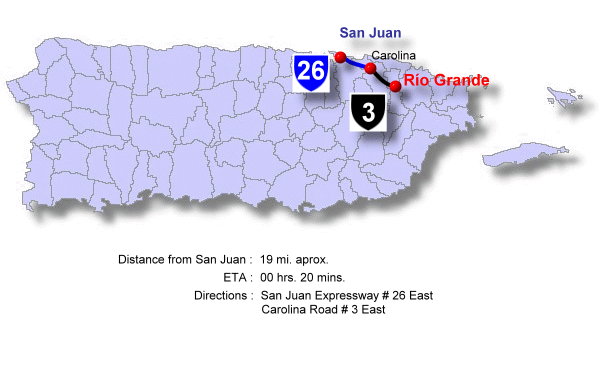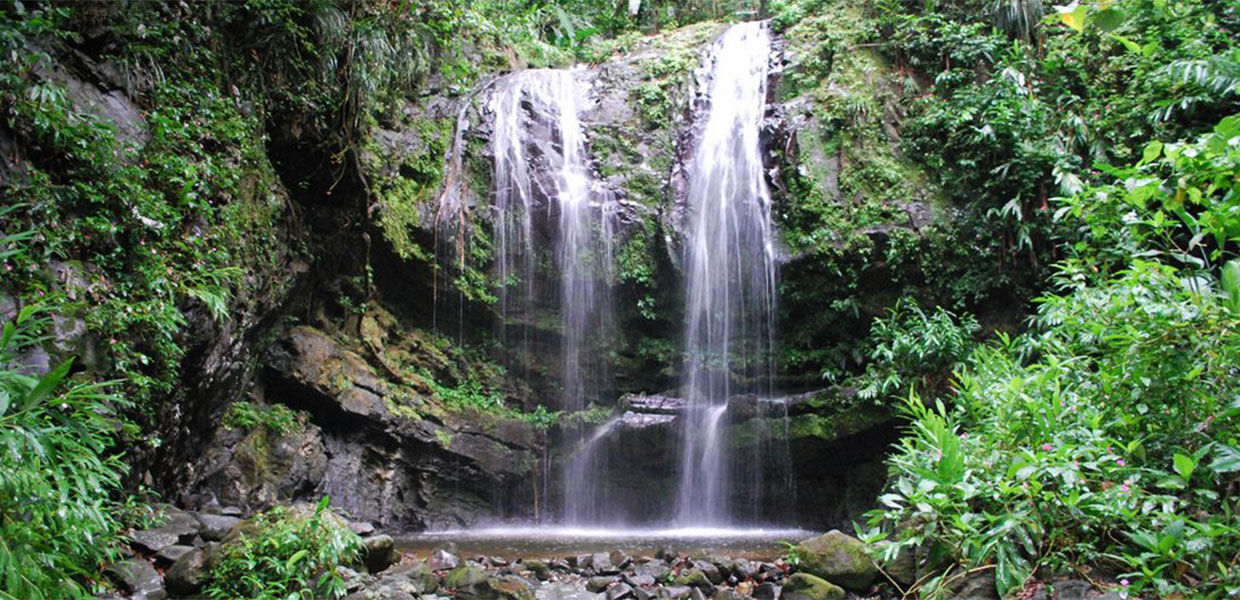
Río Grande, Puerto Rico
El Yunque City
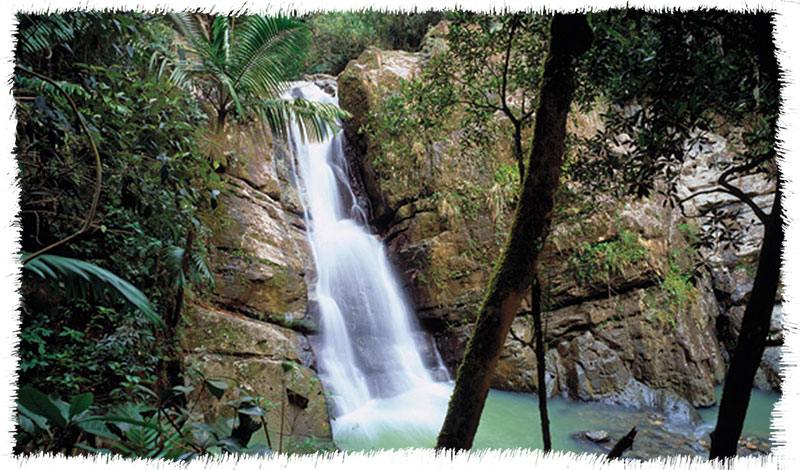
Río Grande (REE-o GRAHN-de) known as the “City of El Yunque,” is a municipality full of history, natural beauty, and Puerto Rican pride, located on the northeast coast of Puerto Rico. Its name is closely linked to the majestic El Yunque National Forest, the only tropical rainforest in the U.S. National Forest System and one of the island’s most iconic landmarks. A large portion of this forest lies within Río Grande’s territory, making the municipality the main gateway to this natural treasure.
The Virgin of Carmen is the town’s patron saint, a symbol of faith and tradition celebrated with great devotion every July during the patron saint festivities.
Río Grande is bordered to the north by the Atlantic Ocean, to the east by Luquillo and Ceiba, to the west by Loíza, and to the south by Naguabo and Las Piedras. Its geography combines the northern coastal plains with the mountains of the Luquillo Range, offering landscapes that range from golden sandy beaches to crystal-clear rivers and lush tropical forests.
The economy of Río Grande has evolved over the years. While it historically depended on agriculture — with crops such as plantains, yautía, tomatoes, cucumbers, and ornamental flowers — today tourism and services are the main pillars. The municipality is home to renowned hotels, resorts, and world-class golf courses that attract both local and international visitors.
Beyond tourism, Río Grande preserves its essence as a hardworking and welcoming community, with a constant commitment to sustainable development, respect for nature, and preservation of its traditions.
Foundation and History of Río Grande
Río Grande was officially founded on July 26, 1840, thanks to the initiative of Don Desiderio Escobar and Quilimaco Escobar, who, with the support of local residents, requested authorization from then-Governor Miguel López de Baños to establish a new settlement. The request was approved, giving rise to what is today known as the municipality of Río Grande, one of the most emblematic towns in northeastern Puerto Rico.
Originally, the municipality consisted of the barrios Ciénaga Alta, Ciénaga Baja, Jiménez, Guzmán Abajo, Guzmán Arriba, Herrera, Río Grande Pueblo, and Zarzal. The town’s name comes from the Río Grande, one of the main tributaries of the Espíritu Santo River, whose waters flow through much of the municipality and have been a source of life, agriculture, and development since ancient times.
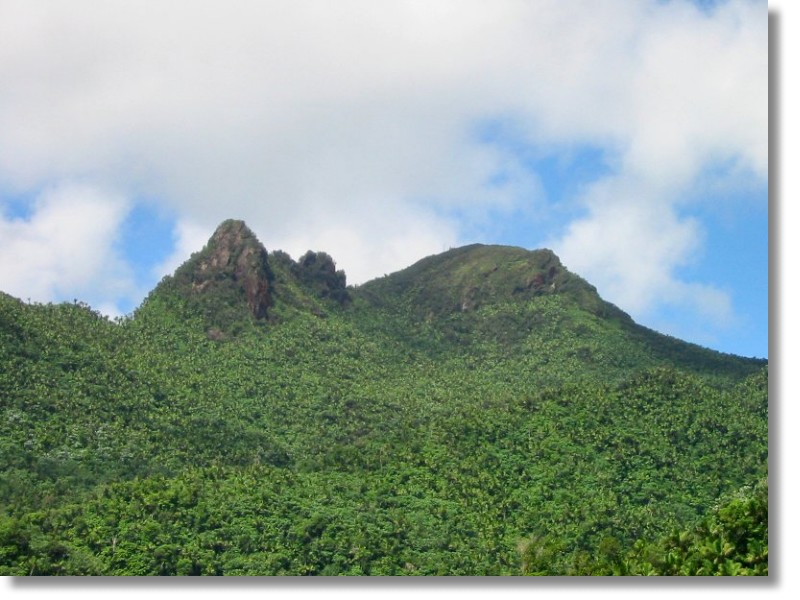
During the period of conquest and colonization, the area was exposed to incursions by Carib and Taíno indigenous groups from the Lesser Antilles. These conflicts initially slowed economic growth, but over time the region began to be settled by families dedicated mainly to livestock and agriculture, establishing the first ranches and sugarcane estates.
By the late 19th century, Río Grande underwent several administrative changes. In 1897, the barrio Mameyes II, originally part of Luquillo, was annexed. When that municipality was dissolved in 1899, its barrios were divided between Fajardo and Río Grande, adding Mata de Plátano, Mameyes I, Hato Viejo, and parts of the barrio Sabana to Río Grande. Later, in 1914, the Legislative Assembly restored Luquillo’s municipal status, returning the original barrios except for Mameyes II, which remained part of Río Grande.
In the early decades of the 20th century, Río Grande’s economy was mainly supported by livestock and sugarcane cultivation. This product gained great relevance with the creation of sugar mills and later sugar plants such as Fortuna, María, and Canóvanas, which boosted economic development and generated employment throughout the region.
Over time, the municipality diversified its economy and strengthened its cultural and natural identity. Today, Río Grande is recognized not only for its historical legacy but also for its close connection with El Yunque, a symbol of life, biodiversity, and Puerto Rican pride.
.
Location:
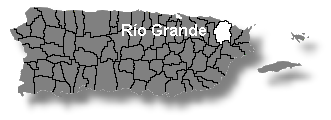 Río Grande is located on the northeast coast of Puerto Rico, within the region known as the Northern Coastal Plains. It is bordered to the north by the Atlantic Ocean and the municipality of Loíza, to the south by Las Piedras, Naguabo, and Ceiba, to the west by Canóvanas and Loíza, and to the east by Luquillo and Fajardo.
Río Grande is located on the northeast coast of Puerto Rico, within the region known as the Northern Coastal Plains. It is bordered to the north by the Atlantic Ocean and the municipality of Loíza, to the south by Las Piedras, Naguabo, and Ceiba, to the west by Canóvanas and Loíza, and to the east by Luquillo and Fajardo.
Area:
158.6 square kilometers (61.0 square miles)
Population:
47,060 (2020 Census)
Population Density:
Approximately 300 inhabitants per square kilometer
Demonym
Riograndeños
Nicknames
The Town of Beautiful Sunsets
City of El Yunque
Wards: Río Grande, Puerto Rico
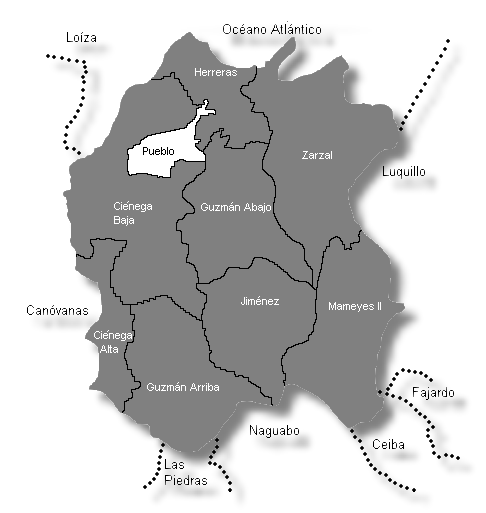
| Census 2020: Population by Wards - Río Grande |
Estimated Population |
| Ciénaga Alta | 4,140 |
| Ciénaga Baja | 16,375 |
| Guzmán Abajo | 5,944 |
| Guzmán Arriba | 834 |
| Herreras | 754 |
| Jiménez | 2,609 |
| Mameyes II | 2,623 |
| Río Grande (town) | 1,751 |
| Zarzal | 12,030 |
| Total | 47,060 |
Source: Censo 2020
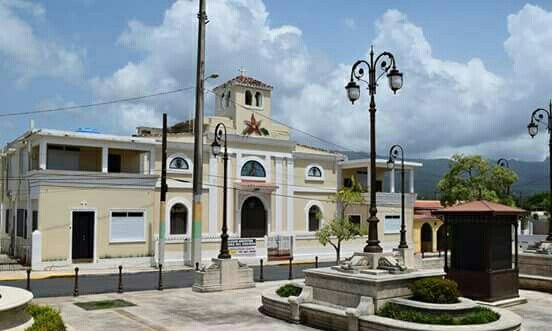
Patron Saint
Our Lady of Carmen
Parish of Our Lady of Carmen
Calle Carmen # 9
Río Grande, P.R. 00745
Tel: (787) 887-2365
Topography:
Río Grande belongs to the Northern Coastal Plain region, characterized by flat and fertile terrain ideal for agriculture and urban development. Toward the south and southeast, the imposing mountains of the Luquillo Range rise, including notable peaks such as El Toro and El Yunque, the latter renowned worldwide for its tropical forest and unique biodiversity.
Hydrography:
The municipality is crossed by numerous rivers and streams that sustain its ecosystems and agriculture. Major rivers include: Herrera, Espíritu Santo, Mameyes, Sonador, Grande, and La Mina. Smaller streams and tributaries include Juan Diego, La Máquina, Lingueta, La Toma, Tabonuco, and Anón.
Coastal soils are low and in some areas marshy, creating wetlands that contribute to biodiversity and serve as habitats for endemic species. These water sources were historically essential for agriculture and early settlement life.
Industries and Economy
Río Grande maintains a combination of traditional and modern economic activities:
- Agriculture: sugarcane, minor fruits (plantains, yautía, tomatoes, cucumbers), ornamental plants, vegetables, and livestock.
- Manufacturing: mainly textiles and derivative products.
- Tourism and services: hotels, resorts, golf courses, and gastronomy.
Historical average wage (1998): $306.99 weekly. The current economy combines tourism, services, and small industries, generating employment and local development.
Climate
Río Grande has a humid tropical climate, characterized by:
- Average temperatures from 24°C to 30°C year-round
- High humidity and frequent rainfall, especially in the El Yunque region
- Hurricane season: June to November
- Ideal conditions for tropical forests, rivers, and endemic biodiversity
Transportation and Accessibility
- Main Roads: PR-3, PR-186, and PR-191, connecting Río Grande with San Juan, Luquillo, Fajardo, and Ceiba
- Nearest Airport: Luis Muñoz Marín International Airport (San Juan, 40–50 minutes by car)
- Public Transport: limited; private vehicle recommended to explore barrios, natural areas, and beaches
- Tourist Access: hotels and resorts provide transportation to El Yunque and nearby beaches
Flag of Río Grande
 The flag features two horizontal stripes of equal size joined by a white triangle at the hoist:
The flag features two horizontal stripes of equal size joined by a white triangle at the hoist:
- Upper green stripe represents the mountains of the municipality, especially those in the Luquillo Range and El Yunque National Forest
- Lower blue stripe symbolizes the Espíritu Santo River, vital to the municipality’s history and agriculture
- White triangle features a Puerto Rican parrot, an endangered endemic species still inhabiting El Yunque within the municipality
The flag reflects Río Grande’s natural wealth, highlighting its mountains, rivers, and native species as symbols of local identity and pride.
Coat of Arms of Río Grande
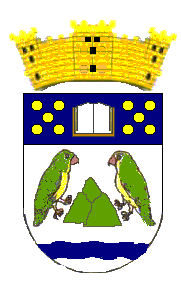 The coat of arms combines indigenous, historical, and geographic elements:
The coat of arms combines indigenous, historical, and geographic elements:
- Silver field: Two facing Puerto Rican parrots (Amazona vittata vittata), representing the region’s endemic fauna
- Wavy blue stripe: Represents the Espíritu Santo River, essential for tourism and commerce
- Green mountain with three peaks: Symbolizes the three main peaks of El Yunque, with the central peak being the tallest
- Open silver book: Represents the Pimentel and Castro School, the first school built in Puerto Rico with combined municipal and Insular Government funds
- Gold bezants: Two groups of five, symbolizing financial contributions for the school’s construction
- Gold mural crown with three towers: Traditional symbol indicating municipal authority and status
The coat of arms was conceived by local historian Don Edmundo Del Valle and reflects Río Grande’s historical, educational, and natural identity.
Points of Interest in Río Grande
Río Grande is rich in natural beauty and recreational spaces, ideal for tourism, environmental education, and family enjoyment:
- El Yunque National Forest: The municipality’s main attraction, the only tropical rainforest in the U.S. National Forest System, with unique biodiversity, rivers, waterfalls, trails, and ecotourism areas
- El Verde Recreational Area: Outdoor space for hiking and wildlife observation, connected to the forest and its ecosystems
- Río Espíritu Santo Nature Reserve: Protected area preserving mangroves, rivers, and wetlands, important for biodiversity and environmental education
In addition to natural richness, Río Grande has historical and cultural sites reflecting its identity.
Traditional Events
The municipality celebrates various festivities that strengthen local culture and community:
- Río Grande Carnival – July: Celebration with parades, music, and traditional gastronomy
- Patron Saint Festivities of Our Lady of Carmen – July: Religious commemoration with cultural and recreational events
- Potato Stuffing Festival – April: Gastronomic event highlighting local culinary traditions
- Picúas Festival – September: Celebration of local traditions, music, and folkloric dance
These activities showcase Río Grande’s cultural richness and community spirit.
Notable Residents of Río Grande
Río Grande has been the birthplace or home of distinguished figures in literature, politics, and journalism:
- José P. H. Hernández (1892–1922): Poet and pharmacist. Born in Hatillo, adopted as a favored son of Río Grande. Notable works: El último combate (1912), Coplas de la vereda (1919), Cantos de la sierra (1925), and Antología poética (1956, posthumous)
- Aníbal Díaz Montero (1911–): Short story writer and journalist, co-founder of Casa del Autor and the Puerto Rican Authors Society. Collaborator of El Vocero, author of travel chronicles and books such as Pedruquito y sus amigos and Nico el Pinche
- Carlos Román Benítez: Journalist, poet, senator, and delegate to Puerto Rico’s Constituent Convention. Served in the Senate (1953–1964) and as Senate secretary in 1965
- Álvaro Rivera Reyes: House Representative and delegate to the Constituent Convention of the Commonwealth of Puerto Rico
- Felipe Sánchez: Former president of the Puerto Rican Union Party and Municipal Assembly of Carolina
These Riograndeños have left a lasting mark in culture, education, politics, and the arts, contributing to the municipality’s development and prestige.
Public Schools sorted by educational levels.
Río Grande District
| Name | Level | Telephone | Address |
| ROSADO FUENTES | Elementary | (787) 887-2051 | PO Box 1481 |
| CAROLA | Elementary | (787) 887-5150 | PO Box 1679 |
| EDMUNDO DEL VALLE CRUZ | Elementary | (787) 887-8950 | PO Box 848 |
| JULIO MILLÁN CEPEDA | Elementary | (787) 888-2476 | PO Box 43002 Suite 389 |
| LA PONDEROSA | Elementary | (787) 887-8630 | PO Box 43002 Suite 381 |
| RAFAEL DE JESÚS | Elementary | (787) 887-2785 | PO Box 1806 |
| RIÓ GRANDE ESTATES | Elementary | (787) 888-7699 | PO Box 575 |
| ROSA BERNARD | Elementary | (787) 887-6680 | PO Box 2270 |
| VEGA ALEGRE | Elementary | (787) 887-3290 | PO Box 2330 |
| VICENTE ESCOBAR | Elementary | (787) 887-4810 | PO Box 2300 |
| CASIANO CEPEDA | Intermediate | (787) 887-4410 | PO Box 3002 Suite 484 |
| URBANA NUEVA | Intermediate | (787) 888-3534 | PO Box 4002 Suite 491 |
| LOLA MILLÁN ORELLANO | Intermediate | (787) 887-4574 | PO Box 848 |
| PRE-VOCACIONAL CASIANO CEPEDA | Intermediate | (787) 887-5200 | PO Box 2312 |
| RAFAEL REXACH DUEÑO | Secondary | (787) 887-2720 | PO Box 472 |
| CASIANO CEPEDA | High School | (787) 887-5295 | PO Box 3001 |
| PEDRO FALÚ ORELLANO | High School | (787) 887-2778 | PO Box 940 |
Hymn:
By Conrado Rodríguez
Entre las ondas que juguetean
del Mar Caribe cerca del fin;
brotó una Islita bella y fecunda
exuberante como un jardín.
Aquí en Río Grande de mis amores
sus bellas damas son todo amor,
y son sus niños tiernos capullos
que dan al libro su corazón.
En esa Islita que Puerto Rico
al descubrirla llamó Colón;
existe un pueblo siempre florido
cual es nido de mi ilusión.
En las alturas la suave brisa
llena los aires de grato olor;
y en la sabana la dulce caña
crece y se esparce con gran primor.
Llaman Río Grande al pueblecito
de una belleza pura y sin par;
y suaves trinos en sus follajes
a voz pregonan su bienestar.
Si la desgracia fatal me hiciera
irme muy lejos alguna vez,
desde otros lares a todas horas,
siempre a Río Grande recordaré.

